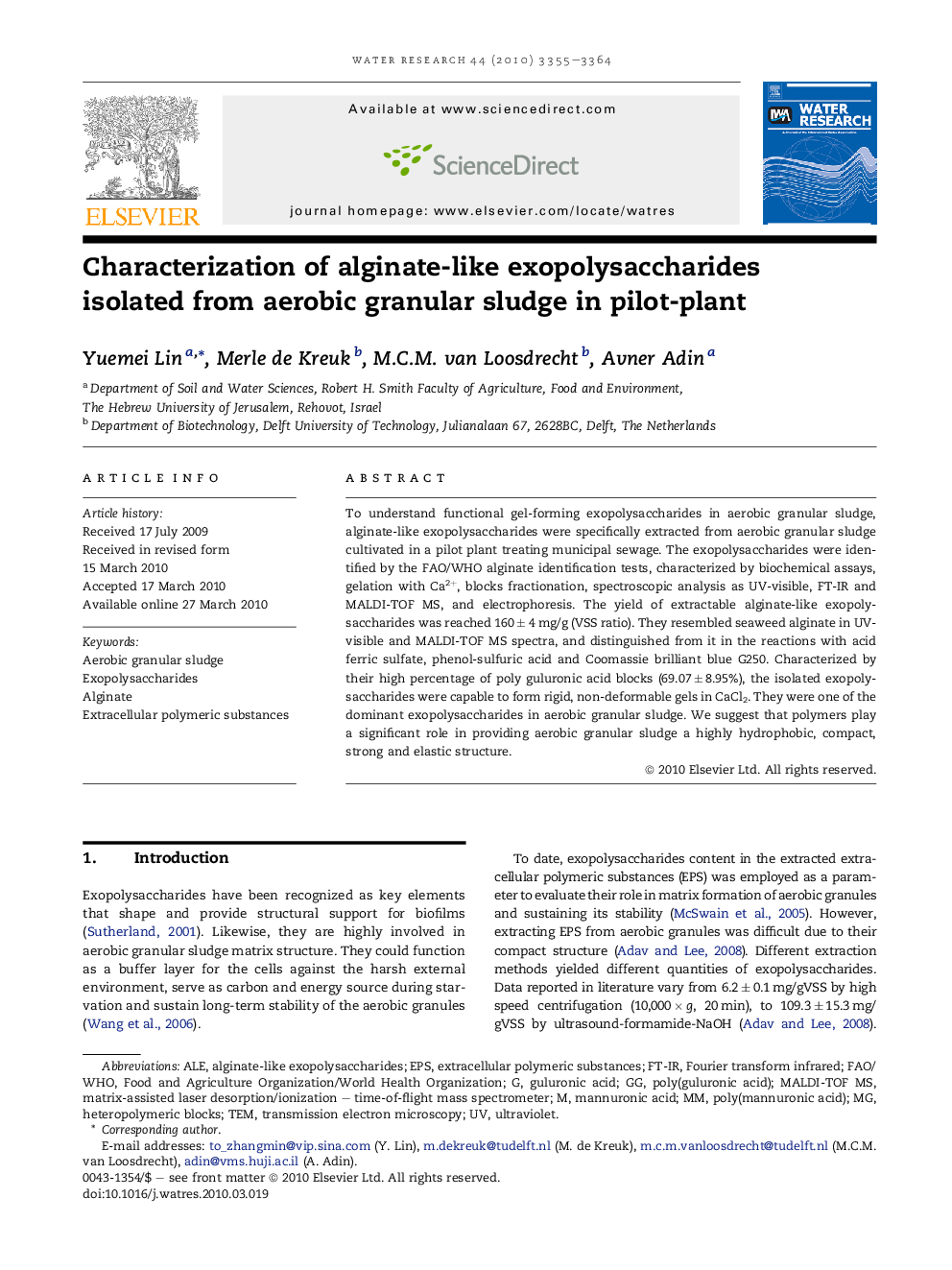| Article ID | Journal | Published Year | Pages | File Type |
|---|---|---|---|---|
| 4484887 | Water Research | 2010 | 10 Pages |
To understand functional gel-forming exopolysaccharides in aerobic granular sludge, alginate-like exopolysaccharides were specifically extracted from aerobic granular sludge cultivated in a pilot plant treating municipal sewage. The exopolysaccharides were identified by the FAO/WHO alginate identification tests, characterized by biochemical assays, gelation with Ca2+, blocks fractionation, spectroscopic analysis as UV-visible, FT-IR and MALDI-TOF MS, and electrophoresis. The yield of extractable alginate-like exopolysaccharides was reached 160 ± 4 mg/g (VSS ratio). They resembled seaweed alginate in UV-visible and MALDI-TOF MS spectra, and distinguished from it in the reactions with acid ferric sulfate, phenol-sulfuric acid and Coomassie brilliant blue G250. Characterized by their high percentage of poly guluronic acid blocks (69.07 ± 8.95%), the isolated exopolysaccharides were capable to form rigid, non-deformable gels in CaCl2. They were one of the dominant exopolysaccharides in aerobic granular sludge. We suggest that polymers play a significant role in providing aerobic granular sludge a highly hydrophobic, compact, strong and elastic structure.
